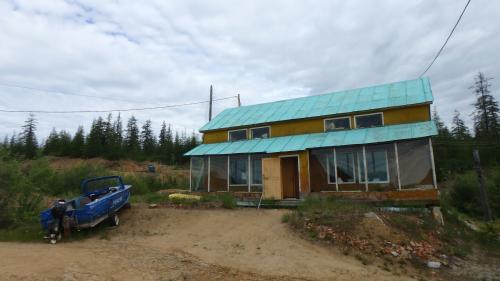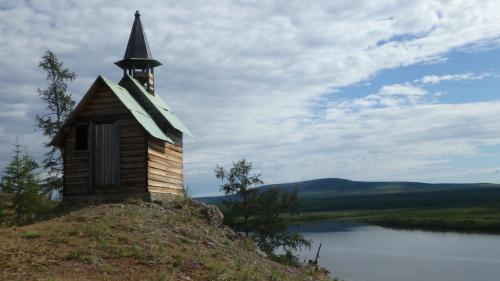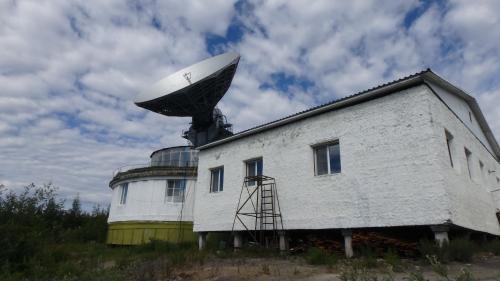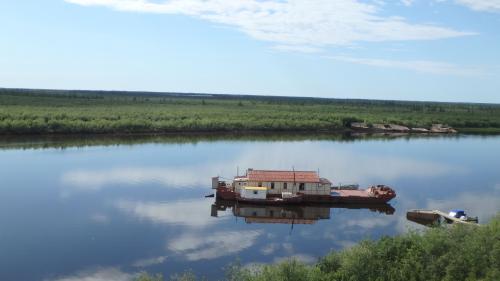Life at the Station
Hello from the North-East Science Station (NESS) in Cherskiy, Russia. The time here is GMT +11 or 15 hours ahead of New York.
The North-East Science Station (NESS) is a year-round base designed for scientific research in the Arctic. It was established in 1977 and is used to provide scientists with an opportunity to conduct Arctic research in several disciplines, including ecology, geology, hydrology, biology, permafrost and more. The station’s director is Russian scientist, Sergey Zimov, who is also the founder of an area called Pleistocene Park, an area designed to restore the Mammoth Steppe ecosystem. Sergey, along with his son Nikata, run the operations here.
NESS is located 5 km outside of Cherskiy, Russia. Upon arriving at the station, the first building we encountered is called the Orbita. This is where the sleeping quarters and dining hall are located for visiting scientists. The building was originally an old radio station and still has a massive satellite sitting on top of the dome. The dining hall is located under the dome and is where we all come together for breakfast, lunch, and dinner cooked by Leylana, who makes wonderful meals out of a very limited range of ingredients. Mealtime is a family affair as Nikata’s wife Nastya, their three children, grandparents, and additional staff join us to eat.
Within a short walk there are a couple buildings designed to work as wet and dry labs. The labs have everything needed to process samples here in Cherskiy, which means that we do not have to transport them back to the states. Part of the building is designed for warm and cold storage, utilized by returning researchers.
Additionally, the science station is comprised of a few more buildings for the Zimov families, a few boats, and a research barge that runs up and down the Kolyma river and its tributaries. The barge itself has sleeping quarters and a fully functional lab on it as well. It’s a pretty amazing setup for Arctic science because it allows researchers access to extremely remote areas with a mobile lab for processing samples immediately.
Russia holds one of the largest permafrost areas in the world, but the majority of it is completely inaccessible. The area surrounding Cherskiy offers a large range of landscape and ecosystem diversity, which makes the location of NESS an ideal spot for researchers looking to answer scientific questions about the Arctic.
Here are some photos to give you a better sense of the station and the landscape immediately surrounding it.
 Outside of the dry lab and warm storage building at the North-East Science Station in Cherskiy, Russia
Outside of the dry lab and warm storage building at the North-East Science Station in Cherskiy, Russia
 The chapel building on the shore of the Pantelehna river in Cherskiy
The chapel building on the shore of the Pantelehna river in Cherskiy
 View of the Orbita building at the North-East Science Station, home of the sleeping quarters for researchers and the dining hall
View of the Orbita building at the North-East Science Station, home of the sleeping quarters for researchers and the dining hall
 The barge used to take researchers up and down the Kolyma river will house researchers and has an working lab inside and a wood burning stove.
The barge used to take researchers up and down the Kolyma river will house researchers and has an working lab inside and a wood burning stove.

Comments